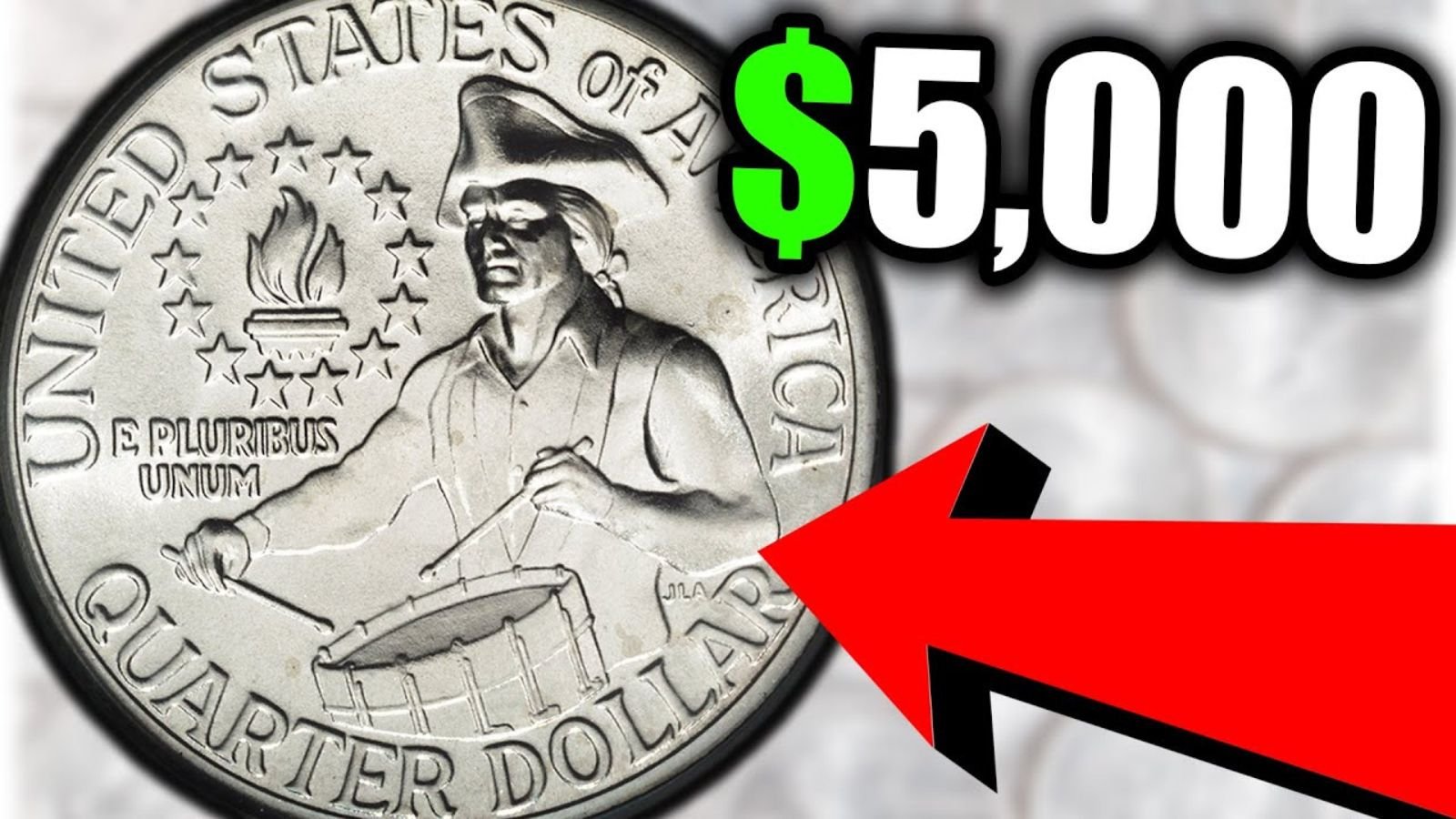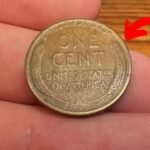If you’ve ever come across a 1976 quarter with a unique design featuring a colonial drummer on the reverse, you may be holding more than just 25 cents in your hand. These Rare 1976 Drummer Boy Quarters, officially known as the Bicentennial quarters, have captured the attention of collectors and numismatists worldwide for their historic symbolism, distinct appearance, and in some cases, unexpectedly high value.
Issued to celebrate the 200th anniversary of American independence, the 1976 Drummer Boy quarters are more than mere currency—they are keepsakes of patriotism and rich American heritage. While most of these coins remain in circulation with standard value, some rare varieties are worth hundreds—or even thousands—of dollars, depending on mint errors, composition, and condition.
Let’s dive deep into the history, design, value, and the features that make these coins so fascinating to collectors today.
Key Highlights of the Rare 1976 Drummer Boy Quarters
| Feature | Details |
|---|---|
| Year of Issue | 1976 (dated 1776–1976) |
| Coin Type | Quarter Dollar (25 cents) |
| Obverse Design | George Washington (John Flanagan design) |
| Reverse Design | Colonial Drummer Boy with victory torch (Jack L. Ahr design) |
| Composition | Clad (Copper-Nickel) & 40% Silver (Collector’s Edition) |
| Mints | Philadelphia (No Mint Mark), Denver (D), San Francisco (S) |
| Circulation Strikes | 1.6+ Billion (Clad) |
| Collector Strikes | 40% Silver Proof and Uncirculated from San Francisco Mint |
| Approx. Value Range | $0.25 to $5,000+ (based on rarity, condition, and error types) |
| Best Suited For | Coin Collectors, History Enthusiasts, Investors in Numismatics |
Why the 1976 Drummer Boy Quarters Are So Special
The Rare 1976 Drummer Boy Quarters hold a unique place in U.S. coinage because they were created for a single-year event—the Bicentennial of American Independence. Unlike most coins that feature static designs for decades, the U.S. Mint issued special one-time reverse designs for the quarter, half-dollar, and dollar coins in 1976.
The Drummer Boy design, created by Jack L. Ahr, portrays a Revolutionary War-era soldier striking a drum, symbolizing the rallying call of the patriots. Behind him is a torch encircled by 13 stars representing the original colonies—a direct nod to the founding of the United States.
This combination of patriotic symbolism and artistic uniqueness immediately set the coin apart and made it highly collectible—even while in circulation.
Types of 1976 Drummer Boy Quarters
Although all 1976 quarters feature the same basic design, several versions exist, and some are much rarer than others.
🪙 Clad Circulation Quarters
These were struck for everyday use and minted in both Philadelphia (no mint mark) and Denver (D). Over 1.6 billion of these were produced, making them the most common type. While most of these are only worth face value, uncirculated or mint condition examples can fetch higher prices from collectors.
🪙 40% Silver Collector Editions
Issued only from the San Francisco Mint (S mint mark), these special editions came in both proof and uncirculated sets. Unlike their copper-nickel counterparts, these contain 40% silver, which adds to their intrinsic value.
- 40% Silver Proof Quarters – Mirror-like finish, produced in limited quantities
- 40% Silver Uncirculated Quarters – Matte finish, included in special mint sets
Collectors prize these versions for their silver content and limited availability. Depending on condition, these coins can be worth $5 to $50 or more.
🪙 Error and Variety Coins
Some of the Rare 1976 Drummer Boy Quarters are valuable due to minting errors. Common varieties include:
- Double Die Obverse (DDO) – Slight doubling on the date or lettering
- Off-Center Strikes – Coins where the design is not aligned properly
- Clipped Planchet – Coins with a portion of the metal missing
- Transitional Errors – Rare cases where coins were struck on the wrong metal composition
These types of errors are scarce and can raise the coin’s value dramatically—sometimes to hundreds or thousands of dollars, depending on severity and condition.
Historical Background of the Bicentennial Coin Program
In 1973, Congress authorized a coin redesign to commemorate America’s 200th anniversary in 1976. The U.S. Mint invited artists to submit new reverse designs, and Jack L. Ahr’s “Drummer Boy” won for the quarter.
Interestingly, all quarters minted in 1975 and 1976 bear the dual date 1776–1976—no coins were released with the 1975 date. This detail makes it easier to spot these special editions in your pocket change even today.
The coins were released into circulation on July 4, 1975, and continued through all of 1976. Because of the nationwide excitement around the Bicentennial celebration, many people saved these quarters as keepsakes, which is why they’re still found in collections and even in circulation to this day.
How to Identify a Valuable Drummer Boy Quarter
While the majority of these coins are common, here’s how to spot a Rare 1976 Drummer Boy Quarter:
- Mint Mark – Check for an “S” mint mark indicating a San Francisco strike. These often signify collector-grade silver versions.
- Composition – A 40% silver quarter will sound different when dropped—more of a “ring” than a “clink.” Weight and edge color also differ (silver has a uniform edge; clad shows copper).
- Error Marks – Use a magnifying glass to look for doubling, off-center designs, or clipped planchets.
- Condition – Coins in MS65 or higher grade (mint state) are highly sought after. Proofs with clean mirror fields and deep cameo contrast can command premium prices.
- Packaging – Coins that are still in their original mint packaging or certified by grading services (like PCGS or NGC) are more valuable.
Current Market Value of Rare 1976 Drummer Boy Quarters
Here’s a rough breakdown of what certain versions are worth in today’s collector market:
| Coin Type/Condition | Estimated Value (2025) |
|---|---|
| Circulated Clad Quarter | $0.25–$1 |
| Uncirculated Clad (MS65+) | $5–$25 |
| 40% Silver Proof (S Mint) | $10–$50 |
| Double Die or Off-Center Error | $100–$500+ |
| MS67+ Graded Silver Quarter | $500–$1,000+ |
| Unique Mint Error (Major) | $2,000–$5,000 or more |
Note: Values depend on coin condition, market demand, and certification. Coins that are graded and slabbed by PCGS or NGC fetch the highest prices.
FAQs About the Rare 1976 Drummer Boy Quarters
Q1: Are all 1976 quarters valuable?
👉 No, most are still worth face value unless they are uncirculated, silver, or contain mint errors.
Q2: How can I tell if my 1976 quarter is silver?
👉 Look for the “S” mint mark and check the coin’s edge—silver coins lack the copper line seen on clad quarters.
Q3: Should I get my 1976 quarter graded?
👉 If you suspect it’s a rare variety or it’s in pristine condition, grading by a certified service like PCGS can significantly increase its value.
Q4: Why is the Drummer Boy quarter so iconic?
👉 It’s one of the few U.S. quarters with a one-year-only reverse design, issued during the nation’s 200th birthday—making it a timeless symbol of American pride.
Final Verdict: Why You Should Check Your Change for the Rare 1976 Drummer Boy Quarters
The Rare 1976 Drummer Boy Quarters are more than nostalgic mementos—they can be valuable pieces of history tucked away in your pocket or coin jar. Whether you’re a seasoned numismatist or just someone intrigued by historical artifacts, these quarters offer a fascinating entry point into the world of coin collecting.
If you happen to own one of these Bicentennial quarters—especially in silver or with a mint error—you might be holding a small fortune in your hand. So the next time you sort through your spare change, don’t overlook the drummer boy. He could be worth far more than twenty-five cents.
Some Important Link
| Telegram Group | Click Here |
| WhatsApp Group | Click Here |
| Home Page | Click Here |










